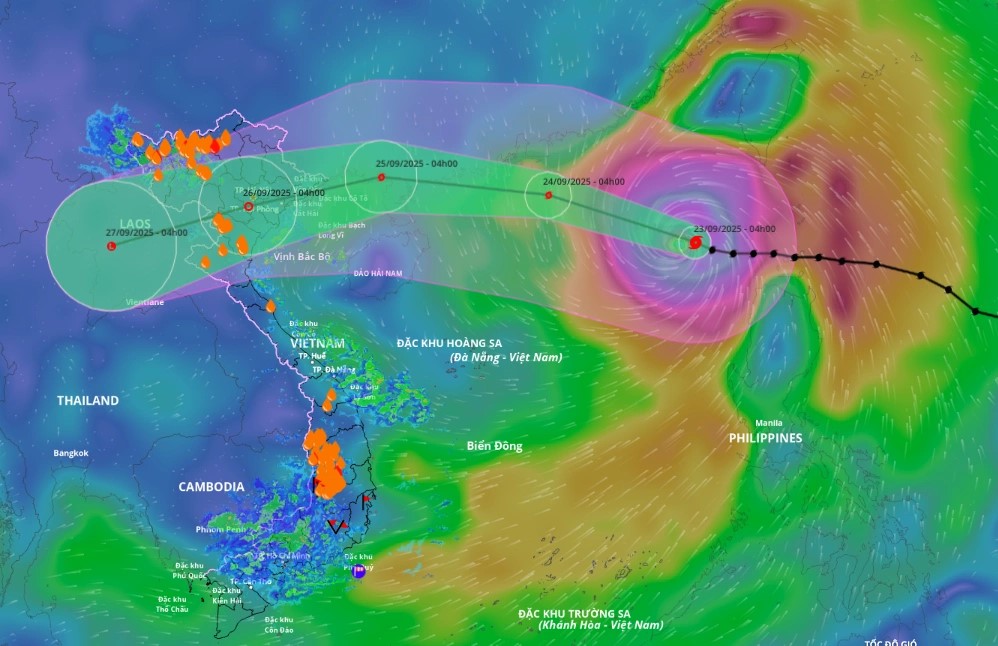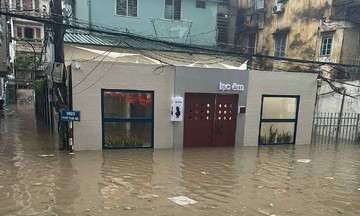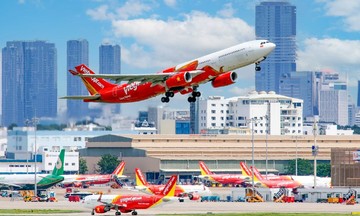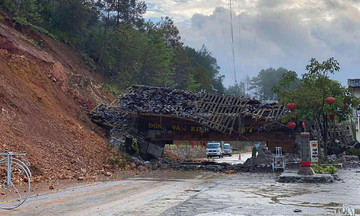Taiwan, Hong Kong, and China's coastal provinces initiated high-level emergency responses as Super Typhoon Ragasa barreled towards the northernmost region of Luzon Island.
Hong Kong's observatory reported that Ragasa was approaching Guangdong province in southern China with winds reaching 220 km/h. Authorities in Hong Kong expected to raise the typhoon warning signal to level 8 on the afternoon of 23/9.
Evacuations, flight restrictions, and ferry suspensions were widespread. Hong Kong International Airport suspended passenger flights for 36 hours, from 8 PM on 23/9 to 8 AM on 25/9. Authorities said airlines began canceling flights earlier.
Around 700 flights were disrupted. Cathay Pacific announced the cancellation of over 500 flights from Tuesday evening to Thursday morning. Many other international airlines took similar action, advising passengers to check for updates regularly.
Coastal provinces in China implemented evacuations, suspended ferry services, and planned flight cancellations. Shenzhen expected to halt all flights on the night of 23/9. Many routes in Fujian were canceled, with further suspensions anticipated. Several areas in Guangdong evacuated residents to safety.
Taiwan canceled flights to Penghu, Kinmen, and Matsu islands and suspended 88 ferries across 13 routes.
 |
Hong Kong residents stock up on supplies in preparation for Typhoon Ragasa on 22/9. Photo: Reuters |
Hong Kong residents stock up on supplies in preparation for Typhoon Ragasa on 22/9. Photo: Reuters
As the typhoon crossed the Luzon Strait, causing large waves and strong gusts, transportation in the Philippines was significantly affected.
Domestic flights in northern Philippines, especially those to Laoag, Tuguegarao, and Basco, were canceled. While major airports like Manila and Clark remained operational, authorities warned of potential cascading delays as the typhoon moved into the South China Sea, threatening Shenzhen. Ferry services between islands were also suspended as a safety precaution.
Experts noted that Ragasa's path and timing caused significant simultaneous disruption to four major aviation markets: Hong Kong, Taiwan, the Philippines, and mainland China.
The extended closure of Hong Kong's airport will likely have a ripple effect on global flight schedules for days. Consequently, airlines in the region implemented flexible rebooking policies and large-scale schedule reductions. Travelers were advised to closely monitor their airlines' schedules.
Passengers with flights to or from Hong Kong and Taiwan between 23/9 and 25/9 were encouraged to change their tickets via airline apps to avoid long queues at the airport. Those traveling to northern Luzon were advised to check their flight status before heading to the airport.
Ferry travel in Taiwan, Hong Kong, and Fujian was suspended during the highest alert levels. Travelers should anticipate delays, prepare alternative plans, and closely monitor official warnings from local authorities as Super Typhoon Ragasa develops.
 |
Projected path and area of influence of the super typhoon, morning of 23/9. Photo: Disaster Monitoring System |
Projected path and area of influence of the super typhoon, morning of 23/9. Photo: Disaster Monitoring System
Super Typhoon Ragasa originated from a tropical depression on the evening of 18/9 and intensified nine categories in four days. The Northwest Pacific in 2024 experienced three super typhoons: Yagi, Gaemi, and Krathon.
Anh Minh (Reuters, Philippines Daily Inquirer, Adept Travel)












